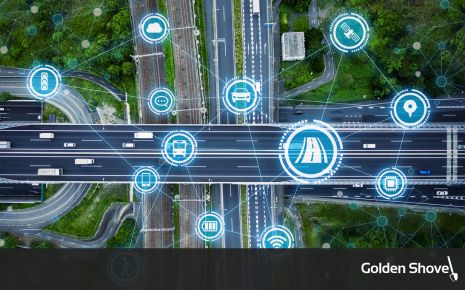Bridging the Gap: Overcoming Infrastructure Deficits in Rural Economic Development

11 Mar 2024
News
In the quest for sustainable growth and prosperity, rural economic developers face a unique set of challenges, paramount among them being a pervasive issue of infrastructure deficits. These deficits not only stifle economic potential but also hinder the quality of life in rural communities.
Understanding the Challenge
Infrastructure in rural areas encompasses a broad spectrum, including transportation networks, broadband internet access, water and sewage systems, and energy supply. The deficits in these areas are multifaceted, often rooted in the geographical vastness and lower population densities of rural regions. This makes the cost-per-use of infrastructure development significantly higher than in urban areas, frequently leading to underinvestment.
Transportation: The Lifeline of Rural Economies
Rural areas often suffer from inadequate transportation infrastructure, which can include deteriorating roads, limited public transit options, and restricted access to air or rail transport. This not only affects the mobility of residents but also limits access to markets, employment, and services, placing rural businesses at a competitive disadvantage.
Broadband: The Digital Divide
Perhaps nowhere is the infrastructure deficit more pronounced than in the digital realm. The digital divide leaves rural communities lagging in access to high-speed internet, a fundamental tool for modern business, education, healthcare, and communication. This gap exacerbates economic disparities, hindering the ability of rural businesses to compete and innovate.
Utilities: Ensuring Basic Services
Access to reliable water, sewage, and energy services is not just a matter of convenience but a critical component of economic and public health. Rural areas often face challenges in providing these basic services efficiently and sustainably, impacting their attractiveness to residents and businesses alike.
Charting the Path Forward: Solutions and Strategies
The path to overcoming these infrastructure deficits requires a multifaceted approach, combining innovative financing, strategic partnerships, and leveraging technology to maximize impact.
Leveraging Public-Private Partnerships (PPPs)
Public-private partnerships can play a pivotal role in financing and managing infrastructure projects. By cominging public resources with private sector efficiency and innovation, PPPs can overcome financial and operational barriers, delivering projects that might otherwise be unfeasible.
Innovative Financing Mechanisms
Rural economic developers should explore innovative financing mechanisms, such as infrastructure banks, green bonds, and revolving funds. These tools can provide the upfront capital needed for significant infrastructure projects, with repayment terms that acknowledge the long-term nature of the benefits.
Emphasizing Broad as Essential Infrastructure
Focusing on sustainable and resilient infrastructure can ensure long-term benefits and reduced maintenance costs. This includes adopting green infrastructure practices, such as renewable energy sources and water conservation systems, which can also create new economic opportunities in the green economy.
Advocacy and Policy Support
Rural economic developers must be vocal advocates for their communities, engaging with policymakers to ensure rural areas are not overlooked in national infrastructure plans. This includes lobbying for equitable funding models and regulations that facilitate rather than hinder rural infrastructure development.
Community Engagement and Capacity Building
Engaging the community in the planning and implementation of infrastructure projects ensures that developments are in line with local needs and priorities. Moreover, building local capacity to manage and maintain infrastructure is crucial for sustainability.
Harnessing Technology and Innovation
Finally, leveraging technology and innovation can offer cost-effective solutions to infrastructure challenges. For example, adopting precision agriculture technologies can mitigate the need for extensive water infrastructure by optimizing irrigation, while telemedicine can reduce the demand for extensive healthcare facilities.
Overview
Overcoming infrastructure deficits in rural areas is a daunting but not insurmountable challenge. It requires a comprehensive strategy that combines innovative financing, strategic partnerships, technology adoption, and community engagement. By addressing these deficits, rural economic developers can unlock the immense potential of their communities, fostering economic growth, improving quality, and ensuring a sustainable future. The journey toward bridging the infrastructure gap is a collective one, necessitating collaboration among all stakeholders to envision and build the resilient, prosperous rural communities of tomorrow.
More Topics





